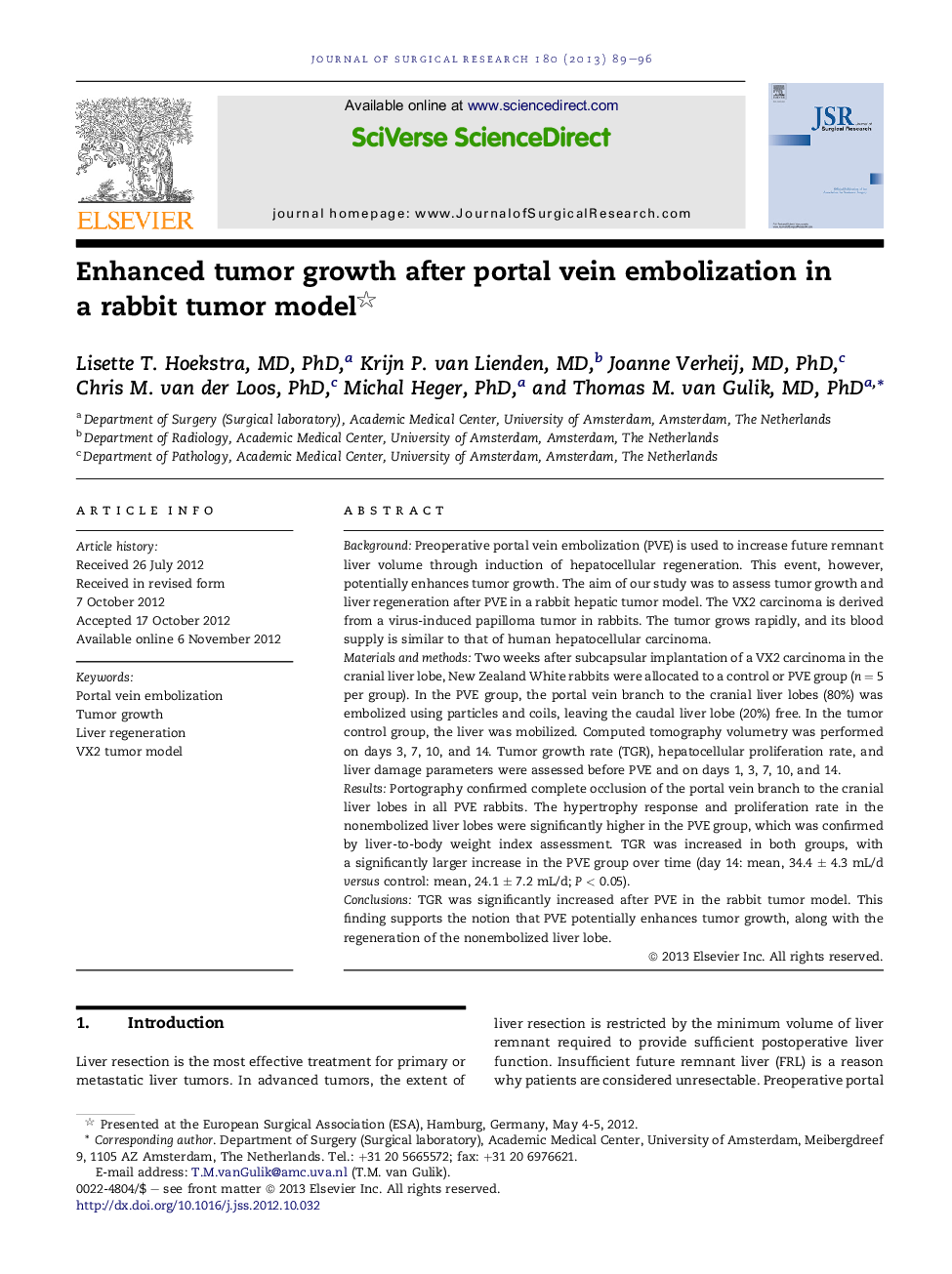| Article ID | Journal | Published Year | Pages | File Type |
|---|---|---|---|---|
| 4301177 | Journal of Surgical Research | 2013 | 8 Pages |
BackgroundPreoperative portal vein embolization (PVE) is used to increase future remnant liver volume through induction of hepatocellular regeneration. This event, however, potentially enhances tumor growth. The aim of our study was to assess tumor growth and liver regeneration after PVE in a rabbit hepatic tumor model. The VX2 carcinoma is derived from a virus-induced papilloma tumor in rabbits. The tumor grows rapidly, and its blood supply is similar to that of human hepatocellular carcinoma.Materials and methodsTwo weeks after subcapsular implantation of a VX2 carcinoma in the cranial liver lobe, New Zealand White rabbits were allocated to a control or PVE group (n = 5 per group). In the PVE group, the portal vein branch to the cranial liver lobes (80%) was embolized using particles and coils, leaving the caudal liver lobe (20%) free. In the tumor control group, the liver was mobilized. Computed tomography volumetry was performed on days 3, 7, 10, and 14. Tumor growth rate (TGR), hepatocellular proliferation rate, and liver damage parameters were assessed before PVE and on days 1, 3, 7, 10, and 14.ResultsPortography confirmed complete occlusion of the portal vein branch to the cranial liver lobes in all PVE rabbits. The hypertrophy response and proliferation rate in the nonembolized liver lobes were significantly higher in the PVE group, which was confirmed by liver-to-body weight index assessment. TGR was increased in both groups, with a significantly larger increase in the PVE group over time (day 14: mean, 34.4 ± 4.3 mL/d versus control: mean, 24.1 ± 7.2 mL/d; P < 0.05).ConclusionsTGR was significantly increased after PVE in the rabbit tumor model. This finding supports the notion that PVE potentially enhances tumor growth, along with the regeneration of the nonembolized liver lobe.
